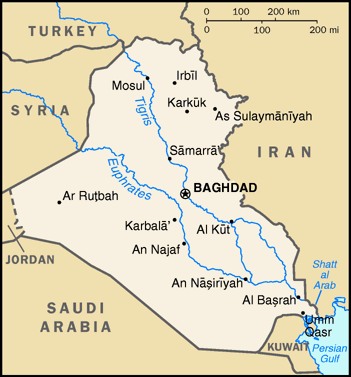In 2003, the US invaded and occupied Iraq for nearly a decade. During that occupation, the demographics of much of the country were dramatically redrawn, as areas with mixed Sunni and Shi’ite populations were quickly cleansed of one or the other, as the war took on an increasingly secular tone.
 That redrawing of Iraq split the country even more dramatically into Sunni and Shi’ite spheres, making way for ISIS to set up shop. The US attacked again in 2014, and is already dramatically redrawing the map once again, with the emphasis on air war meaning more wholesale destruction.
That redrawing of Iraq split the country even more dramatically into Sunni and Shi’ite spheres, making way for ISIS to set up shop. The US attacked again in 2014, and is already dramatically redrawing the map once again, with the emphasis on air war meaning more wholesale destruction.
Nowhere is that more clear than in Ramadi, the “capital” of Anbar Province, which was “liberated” in December and January, and also almost entirely destroyed. Iraqi officials have talked of massive damage in the city, and over half a year later civilians still aren’t being allowed back in in large numbers. A former city of over half a million people, it’s unclear if Ramadi will survive at all, but it clearly will never be the same.
Everywhere “liberation” has come, US airstrikes have followed, with widespread destruction across several towns on the frontier between ISIS and Iraqi government territory, and Iraqi officials looking toward a protracted battle in Mosul. It’s Iraq’s second largest city, or ISIS’ largest, depending on how you reckon it. Either way, the battle is going to involve heavy US airstrikes, and how much of Mosul will be left remains to be seen.


